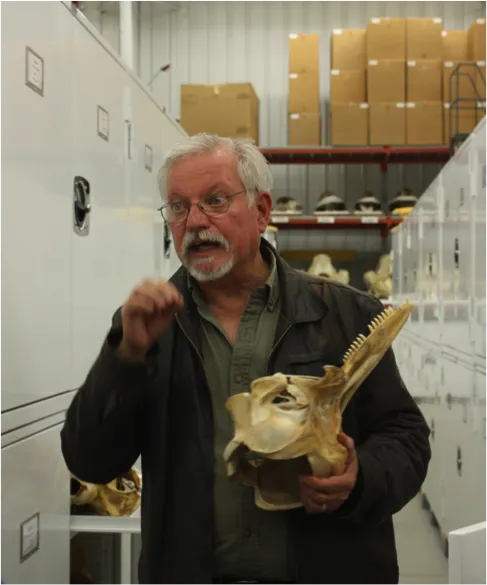Whale Earwax: What You Can Learn From Strange Collections

Ever collected something a bit strange? Snow globes, pens, stamps and coins are fairly typical, but museum collections can have some odd groups. Like hundreds of whale earwax plugs. Yes, that’s right: whale earwax.
All cetaceans (whales, dolphins and porpoises) produce earwax, just like humans. In some species of baleen whales and in sperm whales, whale earwax can build up in layers over time to form an “earplug” that sits in the ear canal. You might be thinking that all that wax might negatively impact their hearing, but it actually works as a built-in hearing aid. The density of the earwax that sits in the ear canal (external ear) is similar to the density of water. The similar densities allow sound to travel through the ear canal into the inner ear unimpeded—something that would be impossible if the ear was filled with air. (There is more to whale hearing than earwax, recent work using the museum’s whale fetus collection has helped unravel this mystery, but there is still more research to be done.)
Why would a museum keep such a strange collection? Well, it turns out you can learn a lot from whale earwax. If you slice a whale earplug lengthwise, it will reveal alternating light and dark layers. Whale earwax is partly made of keratin—the same material as your hair, fingernails and whale baleen. The keratin gives the earwax a relatively dark color and dark layers are associated with periods of migration or when the whale is not feeding. During periods of feeding, lipid droplets, perhaps from prey, are interspersed between the cells, resulting in a lighter color. The alternating color of layers can help a scientist estimate whale age, although different species of whales excrete earwax at different rates. In blue whales, a pair of layers—one light and one dark—represents one year of life.
Scientists have been using earplugs to age whales since the 1950s. In fact, the whale earplugs at the Smithsonian were collected between the 1950s and 1960s at “whaling stations” when commercial whaling for meat, oil, blubber and baleen was common. In 1986, a global moratorium on commercial whaling came into effect, so now (with very few exceptions), earplugs can only be collected from whales that have died from ship strikes, entanglement in fishing gear or strandings.
Recent advances in technology, including a new technique developed by Dr. Sascha Usenko and Dr. Steven Trumble from Baylor University has allowed scientists to chemically analyze traces of compounds in each waxy layer of an earplug, opening a whole new dimension of research possibilities within the earplug collection. Removing each layer is painstakingly hard and requires a microscope, a steady hand, many hours and numerous cups of coffee.
Studying earplugs gives us information about a whale’s life history that was previously unavailable. So far, their analysis has been able to quantify lifetime levels of two hormones and forty-two contaminants from a single 10-inch earplug obtained from a male blue whale that died from a ship strike. For this male blue whale, results showed that he reached sexual maturity around 10 years old, and felt the most stress shortly after—finding a mate is never easy. Exposure to pesticides and flame retardants that have been banned for several decades were highest from when the whale was born to six months old, showing maternal transfer and persistence of the chemicals in the whale’s body. Mercury did not follow the same trend. Instead, it had lower maternal transfer, but two later peaks that could be the result of feeding in highly contaminated industrial areas. To date, this is the only earplug fully analyzed in this way, although there are certainly more in the works.
Unfortunately, many whales—including blue whales—are endangered due to historical hunting. Fortunately, the population of blue whales in California is recovering, however other blue whale populations continue to face challenges to recovery such as noise pollution (it makes communication difficult), ship strikes and entanglement in fishing gear. By examining the stress and contaminant levels of contemporary whales, then comparing them to historical baselines using earwax in museum collections, we can assess what impacts humans have had, and currently have, on whales and marine ecosystems. This type of information can then be used to develop management plans to reduce threats and facilitate recovery.
With a treasure trove of data coming from whale earwax, it’s a good thing we hung on to this strange collection!
Editor’s note: If you want to learn more, look out for a new activity coming in the next few months that will be in the Q?rius space of the Smithsonian National Museum of Natural History.


